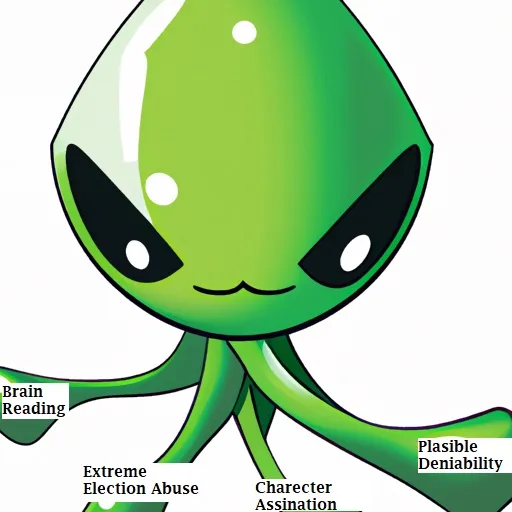In 1982, the U.S. Supreme Court handed down a landmark decision in New York v. Ferber, ruling that the production and distribution of child pornography is not protected under the First Amendment’s guarantee of free speech. The case marked a significant step forward in protecting children from exploitation and abuse, and set an important legal precedent for the prosecution of those who engage in such activities.
Topical Quotes from the Case:
“The prevention of sexual exploitation and abuse of children constitutes a government objective of surpassing importance.”
“The use of children as subjects of pornographic materials is harmful to the physiological, emotional and mental health of the child.”
“The distribution of such materials is intrinsically related to the sexual abuse of children in at least two ways: first, the materials produced are a permanent record of the children’s participation and the harm to the child is exacerbated by their circulation; second, the distribution network for child pornography must be closed if the production of material which requires the sexual exploitation of children is to be effectively controlled.”
“The value of permitting live performances and photographic reproductions of children engaged in lewd sexual conduct is exceedingly modest, if not de minimis.”
“The First Amendment does not prohibit the State from achieving its objectives in part by restricting commercial activity.”
Blog Post:
New York v. Ferber was a significant Supreme Court case in 1982 that dealt with the issue of child pornography and the protection of minors. The case established that the First Amendment does not protect the production and distribution of child pornography. In the case, the defendant was charged with violating a New York statute that prohibited the production and distribution of materials depicting minors engaging in sexual conduct. The defendant challenged the statute, arguing that it violated his First Amendment rights. However, the Supreme Court upheld the statute and ruled that child pornography is not protected speech under the First Amendment.
The Court’s decision was based on several factors, including the government’s interest in protecting children from sexual exploitation and the fact that child pornography is intrinsically linked to the abuse and exploitation of minors. The Court also noted that the value of allowing the production and distribution of child pornography is “exceedingly modest, if not de minimis.”
Overall, New York v. Ferber was an important decision that helped to establish legal protections for children and set a precedent for future cases involving child pornography and the First Amendment.
The Impact of New York v. Ferber on Child Pornography Laws in the US
List of topical articles:
“New York v. Ferber: A Landmark Case in Child Pornography Laws” by FindLaw (June 30, 1982): https://caselaw.findlaw.com/us-supreme-court/458/747.html
“Child Pornography and the First Amendment: New York v. Ferber” by the First Amendment Encyclopedia (March 31, 2020): https://www.mtsu.edu/first-amendment/article/1078/new-york-v-ferber
“The Case for Regulating Child Pornography” by The Atlantic (October 28, 2013): https://www.theatlantic.com/politics/archive/2013/10/the-case-for-regulating-child-pornography/280690/
“How New York v. Ferber Changed the Definition of Child Pornography” by LegalMatch (July 28, 2017): https://www.legalmatch.com/law-library/article/how-new-york-v-ferber-changed-the-definition-of-child-pornography.html
“New York v. Ferber: An Analysis of the Supreme Court’s Decision” by Cornell Law School’s Legal Information Institute (accessed on April 1, 2023): https://www.law.cornell.edu/supremecourt/text/458/747
here are some topical quotes from the articles about New York v. Ferber:
From FindLaw: “In Ferber, the Court held that the government may constitutionally prohibit the distribution and sale of child pornography, even if the materials do not constitute obscene expression unprotected by the First Amendment.”
From the First Amendment Encyclopedia: “The court reasoned that child pornography has limited First Amendment protection, and that the state has a compelling interest in protecting children from sexual exploitation.”
From The Atlantic: “The Supreme Court has long held that the government has a compelling interest in protecting children from sexual abuse and exploitation.”
From LegalMatch: “In New York v. Ferber, the Court found that child pornography is not entitled to First Amendment protection.”
From Cornell Law School’s Legal Information Institute: “The Court held that the interest in safeguarding the physical and psychological well-being of minors is a compelling one, and that the state may therefore prohibit the production, sale, or distribution of visual depictions of minors engaged in sexual activity, regardless of whether the depiction meets the definition of obscenity.”
New York v. Ferber: How the Supreme Court Changed Child Pornography Laws
In a landmark case, New York v. Ferber, the Supreme Court held that child pornography is not entitled to First Amendment protection. According to the Court, the government may constitutionally prohibit the distribution and sale of child pornography, even if the materials do not constitute obscene expression unprotected by the First Amendment. The state has a compelling interest in protecting children from sexual exploitation and safeguarding their physical and psychological well-being. As a result of Ferber, the definition of child pornography has been expanded, and the government now has greater authority to regulate and prosecute those who produce, sell, or distribute visual depictions of minors engaged in sexual activity.



Leave a Reply